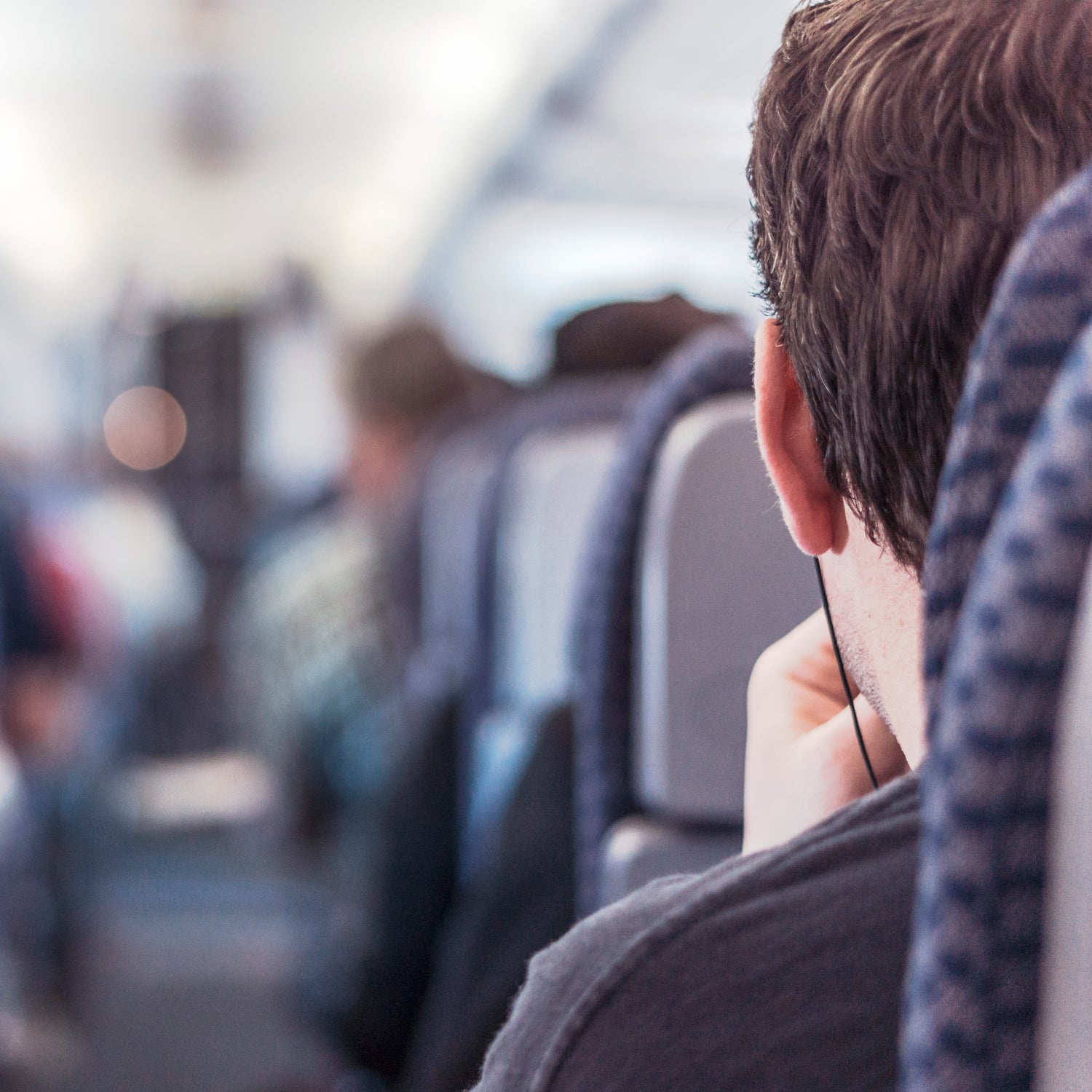Airlines have been on a roll with downgrading economy class seats. To wit: Jet Blue, whose planes are known for being the most comfortable (on the domestic front), it will cram 15 extra seats into their Airbus A320 beginning in 2016. Since those aluminum tubes don’t expand, that means cutting into your personal space (Jet Blue will also start to charging for luggage, so factor in more carry-on bags). Delta, United, Alaska, Southwest and Spirit��have recently installed new “slimline” seats using thinner cushioning and trimmer dimensions to squeeze more people into coach class.
And don’t bank on a free upgrade anytime soon either. Airlines tend to move only their status members to the classier cabins without slapping on extra fees. Instead, air travelers need to upgrade their own coach experience. The good news?��You can turn almost any just-barely-survivable seat into one that’s actually comfortable—if you follow these 10 travel-tested tips.
Come Prepared
Details about an airplane’s amenities (such as Wi-Fi and power outlets) and seat comfort show up when you search a flight on�����ǰ�����(whose ratings now appear on��). You can also plug your flight details into to get a rundown of the tube you’ll be flying in.��
Check in Early, Stay Vigilant
The best seats go to those passengers who check in 24 hours before the flight, though the most desirable seats are usually blocked off for full-fare passengers and people who have status. “Reserve a seat if possible during the booking process,” says Jami Counter, senior director of . “If you were only able to get a middle seat, check at the 72-hour mark and again at the 48-hour mark as this is when elite flyers tend to get upgraded, and window and aisle seats could open up.” She also notes that gate agents can move your seat once you’re in the airport—just ask.
Pack a Cushion
“There’s so little cushioning in the new seats, they’re basically like a hard bench,” says air travel expert , who’s started to see people bringing stadium cushions onboard. The extra padding softens the seat’s edge and extends its support. When you’re not at 30,000 feet, the����could also make a nice addition to your camping equipment.
Create Your Own Foot Rest
Add an����to your bag of tricks or leave your carry-on under the seat in front of you. It’s a small detail but it improves blood circulation and takes pressure off your lower back.
Tune Out
Chill out with earplugs or noise-cancelling earphones, which really do drown out all background noise.
You Get What You Give
It’s not outright bribery, but bringing a small gift like cookies for the flight attendants can really pay off in the form of extra snacks, pillows, or free in-flight entertainment. It could even get you relocated to the front of the plane should there be room.��
Make Your Own Amenities Kit
The care packages that airlines give to higher-paying customers is easy and cheap for you to assemble yourself. Bring your own eye mask, ear plugs, hand sanitizer, slipper-socks, travel toothbrush and face wipes. Splurge on a good pillow. The����is great for flying and camping.
Fly with New Zealand Air
Okay, that’s not always possible, but meet��, their version of an economy plus seat. It’s a row of three economy seats where the armrest flips up and foot rests extend out to transform into a couch. The airline reduces the fare of the middle seat if two passengers want to share the couch. New Zealand Air created the seats a few years ago, but they began licensing out the design this year starting with China Airlines. No word on it coming stateside.
Be an In-Flight Foodie
at airports are improving, but prices are not. You already know it’s a good idea to bring your own food—cheaper, tastier and healther, but if you run out of time, check . Its database of airport restaurants are user-ranked and rated to help you find the good stuff.
BYOBevs
It’s illegal for anyone other than the airline attendent to pour something alcoholic into your cup, but those minis sure do fit nicely in your ziplock of toiletries. If you’re averse to imbibing in air, bring your own tea packets.��


